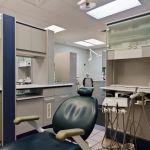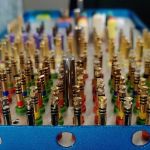
- Understanding Oral Hygiene Challenges with Braces
- Daily Oral Care Routine for Braces Wearers
- Tools and Products to Enhance Oral Cleanliness
- Common Mistakes and How to Avoid Them
- Real-Life Experience: An Orthodontic Journey
- Why Professional Dental Checkups Are Essential
1. Understanding Oral Hygiene Challenges with Braces
Maintaining oral hygiene with braces is a unique challenge compared to regular dental care. Braces consist of brackets, wires, and bands that create numerous tiny spaces where food particles and plaque can easily accumulate. This environment fosters bacteria growth, increasing the risk of tooth decay, gum inflammation, and bad breath. Understanding these difficulties is the first step towards developing an effective oral care strategy.
Unlike conventional teeth cleaning, braces require extra attention and careful technique to ensure every nook and cranny is thoroughly cleaned. Neglecting this can lead to staining around brackets and even permanent enamel damage. Therefore, learning how to maintain oral hygiene with braces goes beyond brushing—it requires a comprehensive approach involving multiple tools and consistent habits.
2. Daily Oral Care Routine for Braces Wearers
2.1 Brushing Techniques Specific to Braces
Brushing with braces is not simply about increasing time spent with a toothbrush; it’s about brushing the right way. Use a soft-bristled toothbrush or an electric brush with an orthodontic head to gently clean around the brackets and wires. Start by angling the brush at 45 degrees to clean above and below the brackets, ensuring the bristles reach beneath the wires where plaque likes to hide.
Spend at least two minutes brushing after every meal to prevent food debris from hardening around the braces. Don’t rush this process — gentle, methodical strokes are much more effective than aggressive scrubbing, which can damage both your braces and gums.
2.2 Flossing and Interdental Cleaning
Flossing remains crucial, but with braces, it’s more complicated. Specialized floss threaders or orthodontic floss picks make it easier to slide the floss under the wires and clean between teeth. This prevents the buildup of plaque that can lead to gingivitis and cavities. For many, this step is often skipped due to difficulty, but mastering it is key to maintaining good oral hygiene.
2.3 Mouthwash Use for Extra Protection
Rinsing with an antimicrobial or fluoride mouthwash daily adds a protective barrier against bacteria and strengthens tooth enamel. This extra layer of care is particularly important when braces create additional risk factors for oral health issues. Choose alcohol-free formulas to avoid drying out your mouth, which can exacerbate plaque formation.
3. Tools and Products to Enhance Oral Cleanliness
Besides the basics of brushing and flossing, a few essential tools can make a huge difference in maintaining oral hygiene with braces.
3.1 Interdental Brushes and Water Flossers
Interdental brushes are perfect for cleaning around brackets and wires where a normal toothbrush can’t reach. These tiny brushes are easy to maneuver and highly effective at dislodging food particles. Meanwhile, water flossers use a targeted stream of water to flush out debris and reduce plaque buildup gently but thoroughly.
3.2 Orthodontic Toothpaste and Fluoride Gels
Using toothpaste specially formulated for braces wearers can help combat sensitivity and protect against enamel erosion. Fluoride gels provide an additional boost in strengthening the teeth and preventing decay. Incorporating these products into your routine helps create a multi-layered defense system.
4. Common Mistakes and How to Avoid Them
Many braces wearers unknowingly make mistakes that compromise their oral hygiene efforts:
4.1 Skipping Brushing After Meals
Eating with braces means food can easily lodge in brackets and wires. Skipping brushing after meals allows plaque to harden and damage teeth. Always carry a travel toothbrush or at least rinse thoroughly after eating.
4.2 Using Hard-Bristled Toothbrushes or Aggressive Brushing
Too much pressure or the wrong toothbrush type can cause gum recession and bracket damage. Stick to gentle, soft-bristled brushes and slow, deliberate strokes.
4.3 Neglecting Flossing
Because flossing is more challenging, some avoid it altogether. This leads to plaque buildup and gum problems. Using floss threaders or water flossers can make flossing manageable and effective.
5. Real-Life Experience: An Orthodontic Journey
Take the story of Emily, a 16-year-old who struggled initially with oral hygiene after getting braces. She found brushing and flossing frustrating, often leaving plaque around her brackets. After consulting her orthodontist and visiting Dentistry Toothtruth, she discovered specialized cleaning tools and techniques tailored for braces care. Within weeks of adopting a dedicated routine—brushing after meals, flossing daily with a threader, and using an interdental brush—Emily noticed her gums were healthier and her breath fresher. Her story illustrates how perseverance and proper guidance can turn oral hygiene challenges into manageable daily habits.
Her journey highlights the importance of education and the availability of targeted products, which you can also find at Dentistry Toothtruth, helping you maintain your braces and keep your smile vibrant throughout your treatment.
6. Why Professional Dental Checkups Are Essential
Regular visits to your dentist and orthodontist are critical when wearing braces. Professionals can detect early signs of problems like white spots, gum inflammation, or plaque buildup that might not be obvious at home. They also provide professional cleanings that reach places difficult for daily home care.
At Dentistry Toothtruth, you can access expert advice, professional services, and recommended products that complement your home care routine. This partnership between professional care and daily maintenance ensures the best outcomes for your oral health during orthodontic treatment.







 Dental Solutions Market Street4.0 (576 review)
Dental Solutions Market Street4.0 (576 review) Mesa Valley Modern Dentistry4.0 (344 review)
Mesa Valley Modern Dentistry4.0 (344 review) Washington Square Dental4.0 (121 review)
Washington Square Dental4.0 (121 review) Gregg W Jepson DMD5.0 (7 review)
Gregg W Jepson DMD5.0 (7 review) Growing Smiles of Voorhees4.0 (2464 review)
Growing Smiles of Voorhees4.0 (2464 review) Metropolitan Endodontics4.0 (78 review)
Metropolitan Endodontics4.0 (78 review) The Importance of Oral Health Education During Pregnancy for a Healthy Pregnancy
The Importance of Oral Health Education During Pregnancy for a Healthy Pregnancy Best Tips for Brushing Your Teeth Properly for Healthy Gums: Essential Techniques for Oral Health
Best Tips for Brushing Your Teeth Properly for Healthy Gums: Essential Techniques for Oral Health Why Skipping Dental Checkups Can Lead to Bigger Oral Health Problems
Why Skipping Dental Checkups Can Lead to Bigger Oral Health Problems Advantages of Porcelain Dental Restorations
Advantages of Porcelain Dental Restorations How Can Diabetes Cause Tooth and Gum Problems? Preventing and Managing Oral Health Issues
How Can Diabetes Cause Tooth and Gum Problems? Preventing and Managing Oral Health Issues Healthy Habits for Promoting Good Oral Health and Hygiene: Tips for a Healthy Smile
Healthy Habits for Promoting Good Oral Health and Hygiene: Tips for a Healthy Smile